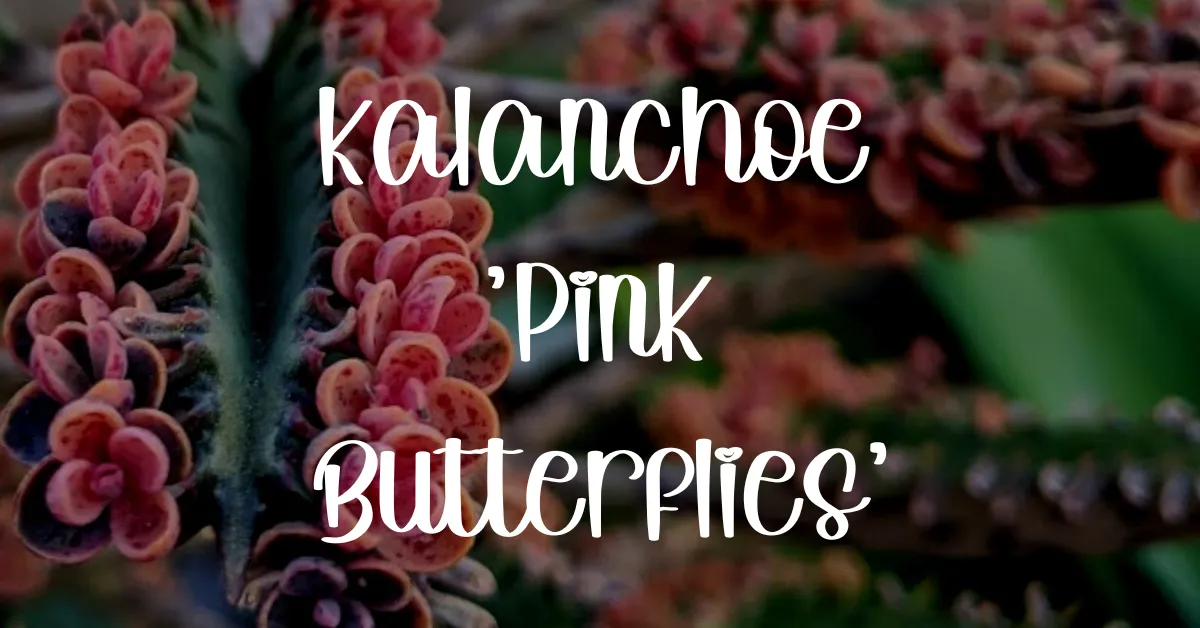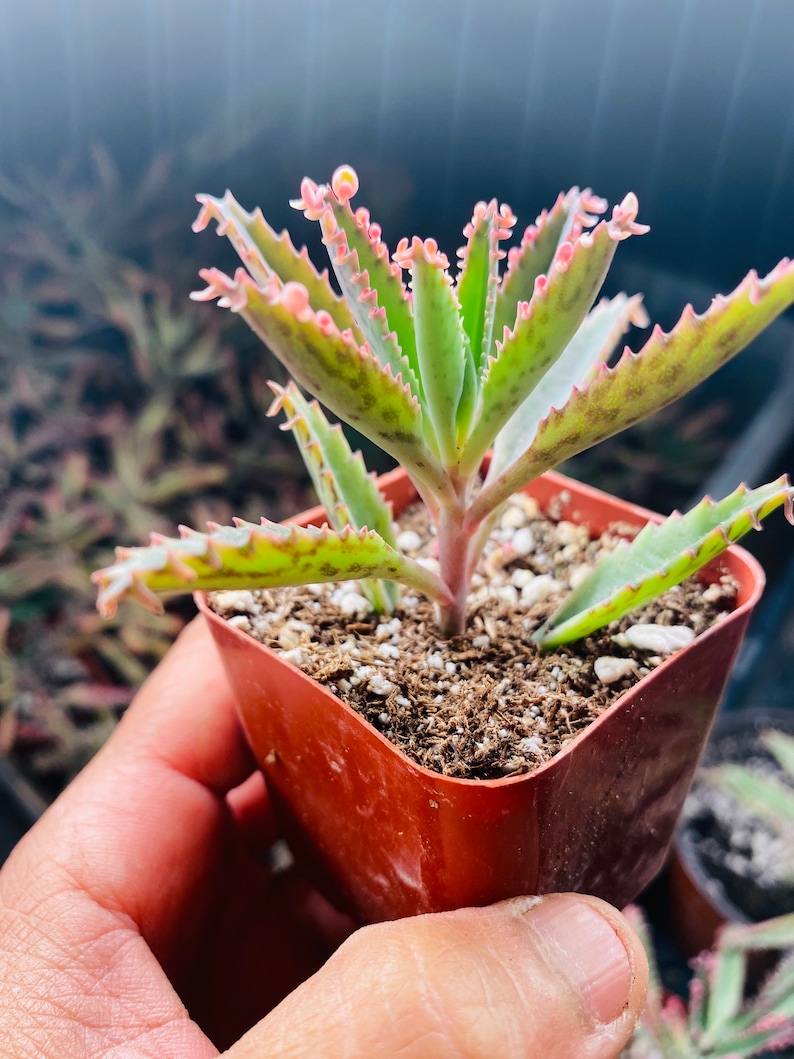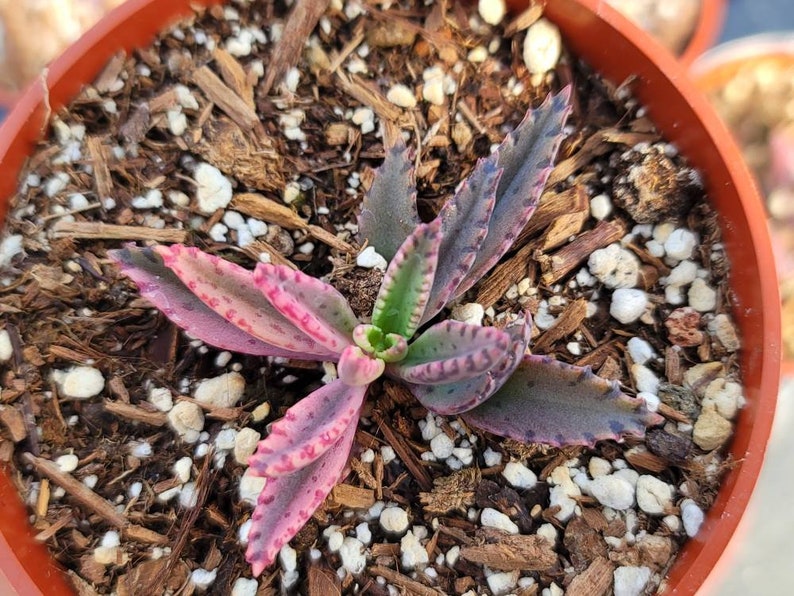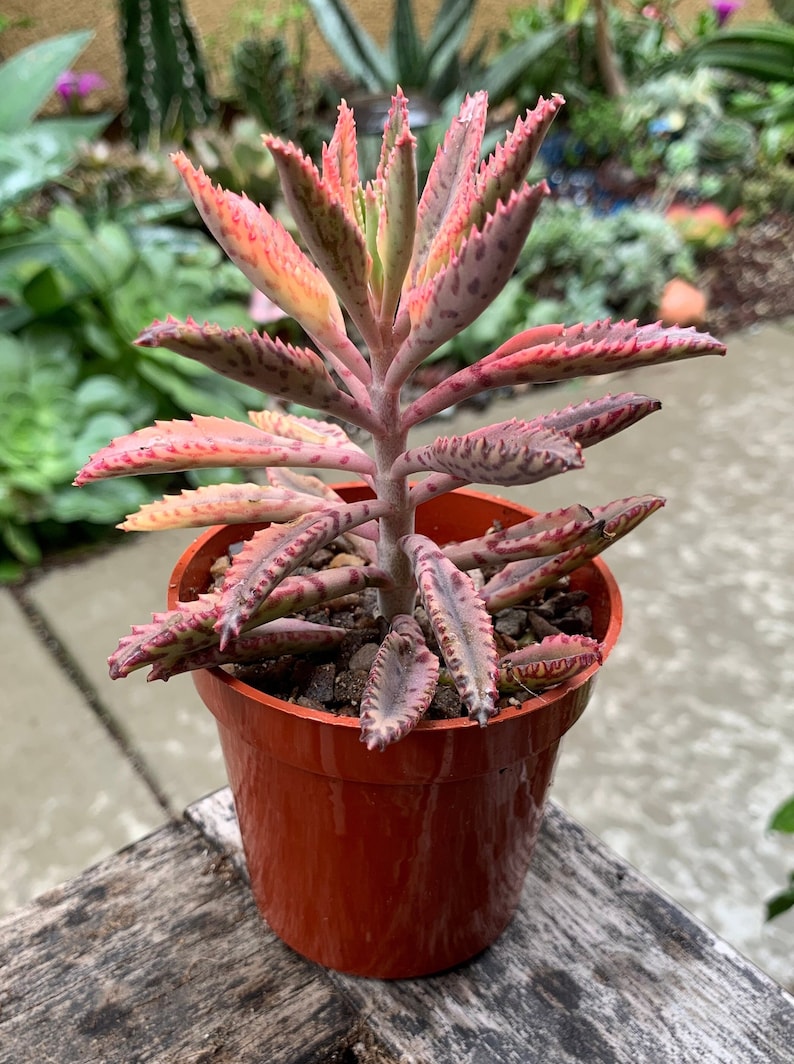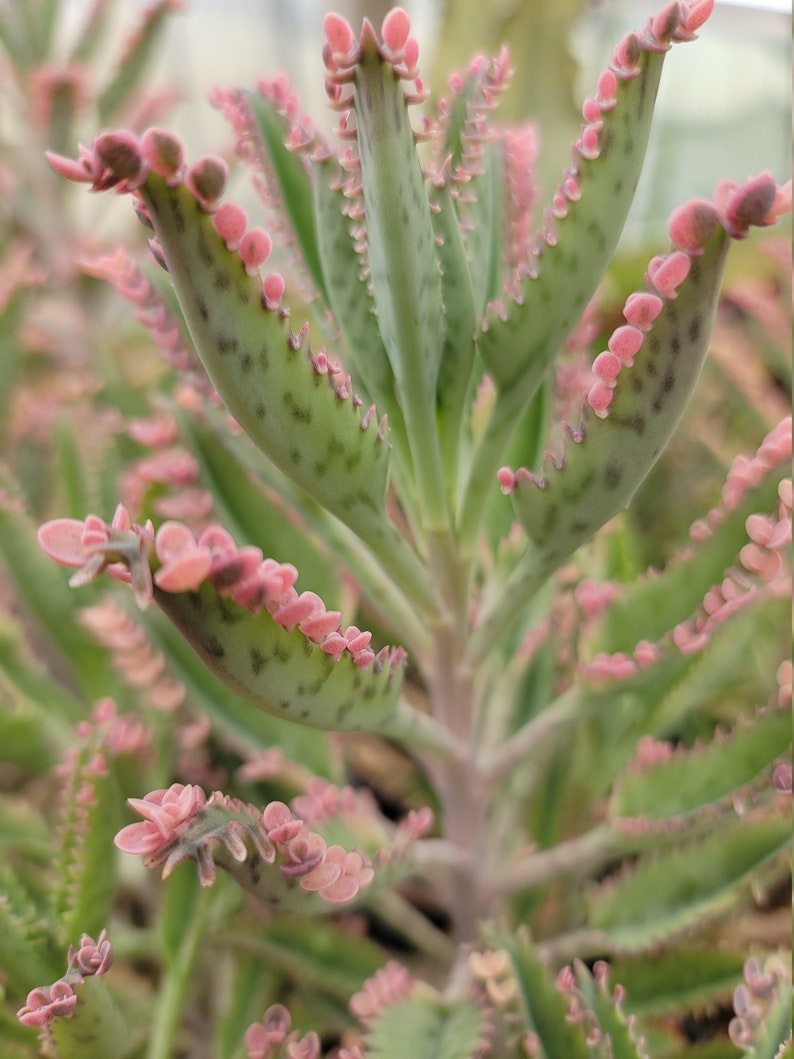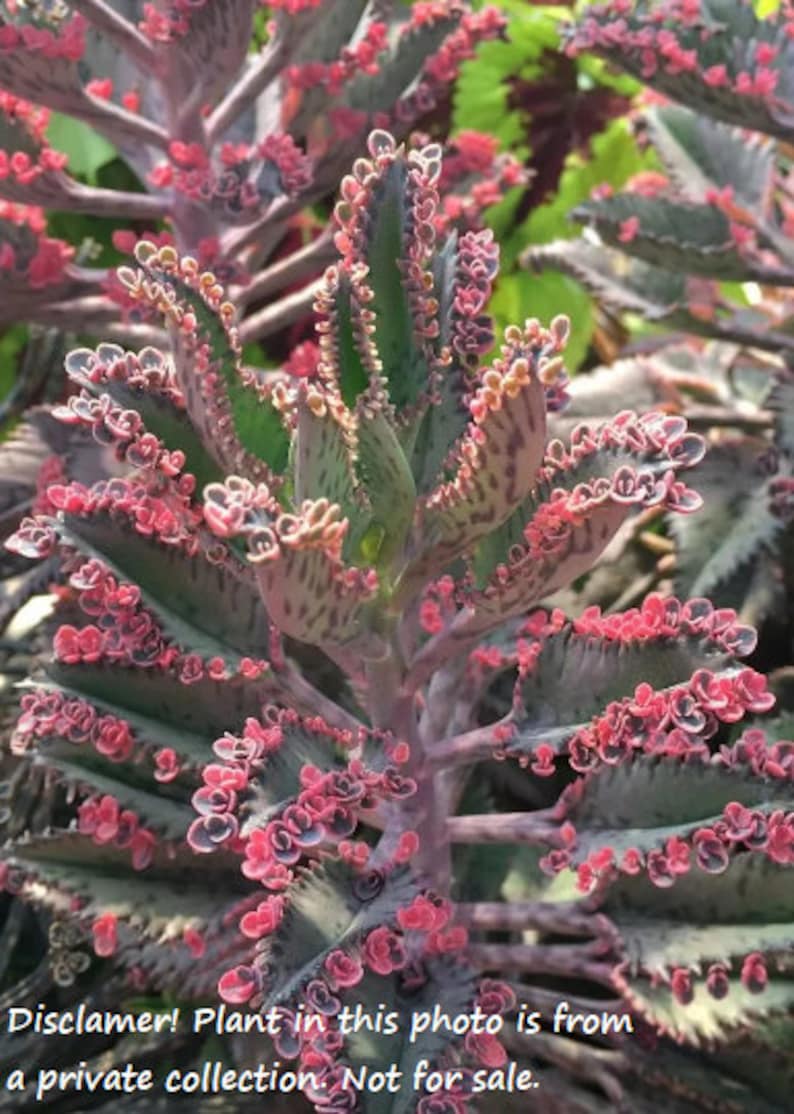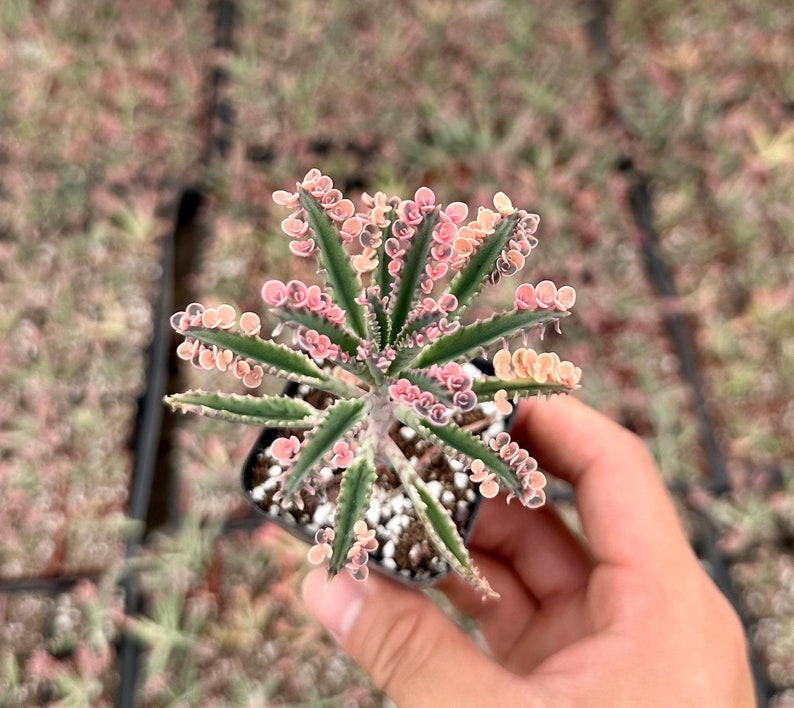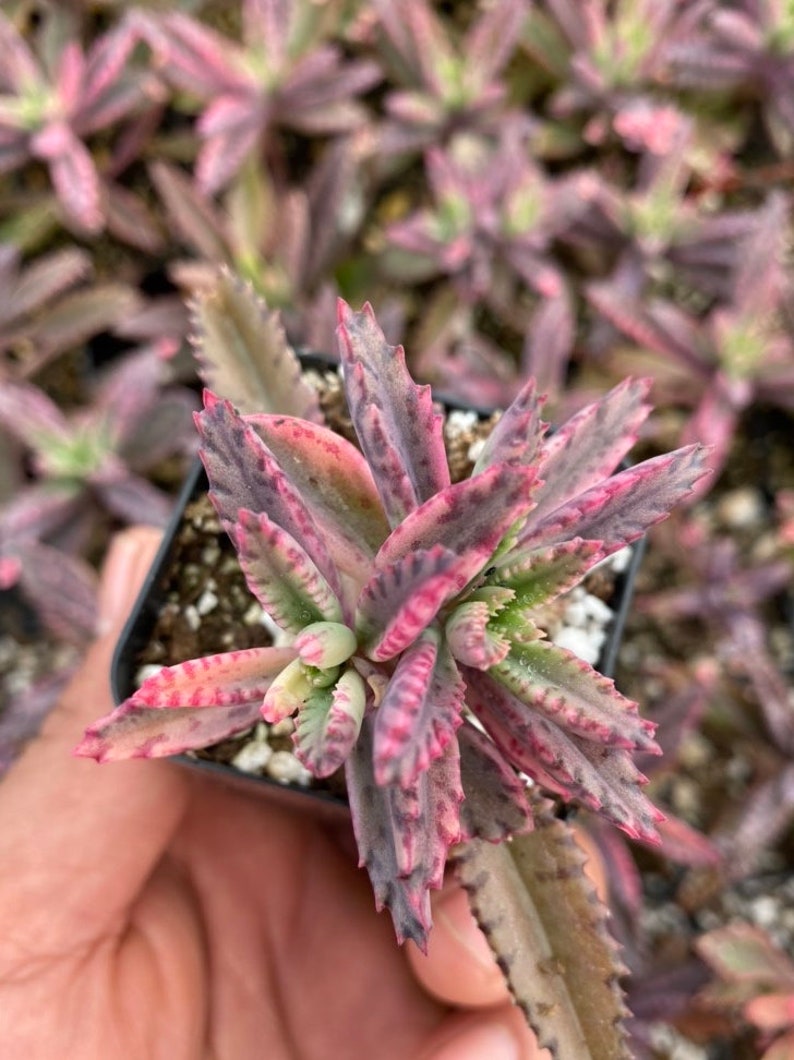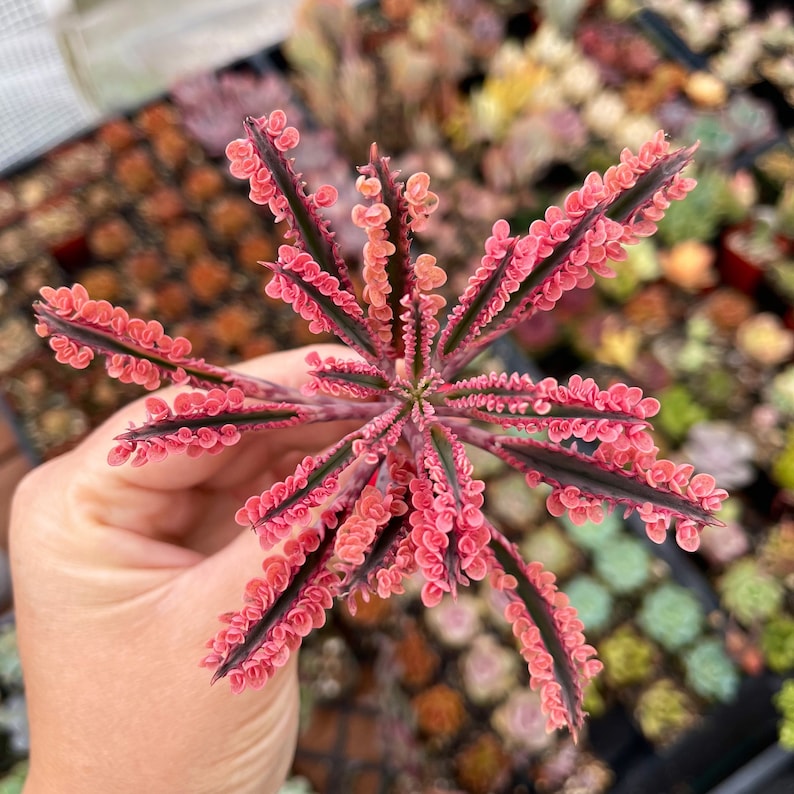Kalanchoe x houghtonii ‘Pink Butterflies’, also known as the Pink Mother of Thousands, is a charming succulent renowned for its unique appearance and relatively easy care requirements. This comprehensive guide will delve into every aspect of caring for this fascinating plant, from the best kind of soil to use, to the most effective methods of propagation.
Dig in!
Other Common Names
Besides ‘Pink Butterflies’, this plant is also commonly known as Pink Mother of Thousands, Pink Chandelier Plant, or Pink Bryophyllum. These names are derived from its charming appearance and prolific reproduction habits.
Plant Description & Growth
Kalanchoe x houghtonii ‘Pink Butterflies’ is an attractive succulent that stands out for its grayish-green leaves lined with tiny, pink, butterfly-like plantlets. The plant typically grows to a height of 1 to 2 feet and can spread just as wide. The plantlets, which form along the leaf edges, add a vivid pop of color and distinctive appeal to this succulent.
Flowering and Blooming
Kalanchoe x houghtonii ‘Pink Butterflies’ produces bell-shaped flowers that are predominantly green with pink to red spots. The blooming period usually occurs during late winter or early spring, adding a touch of color to your garden or indoor space during these seasons.
Light Requirements
Like most succulents, Kalanchoe x houghtonii ‘Pink Butterflies’ prefers bright light conditions. It can tolerate full sun to partial shade, but it will thrive best with a few hours of direct sunlight each day. If you’re growing it indoors, a south-facing window is an ideal location.
Watering Frequency
Kalanchoe x houghtonii ‘Pink Butterflies’ has a typical succulent watering requirement, which means less is more. Aim to water the plant thoroughly once the soil has completely dried out. Overwatering can lead to root rot, a common problem among succulents.
Ideal Soil
Kalanchoe x houghtonii ‘Pink Butterflies’ prefers a well-draining soil mix. A combination of 2 parts potting soil, 1 part perlite, and 1 part coarse sand is ideal. The goal is to ensure quick water drainage to prevent the roots from sitting in water.
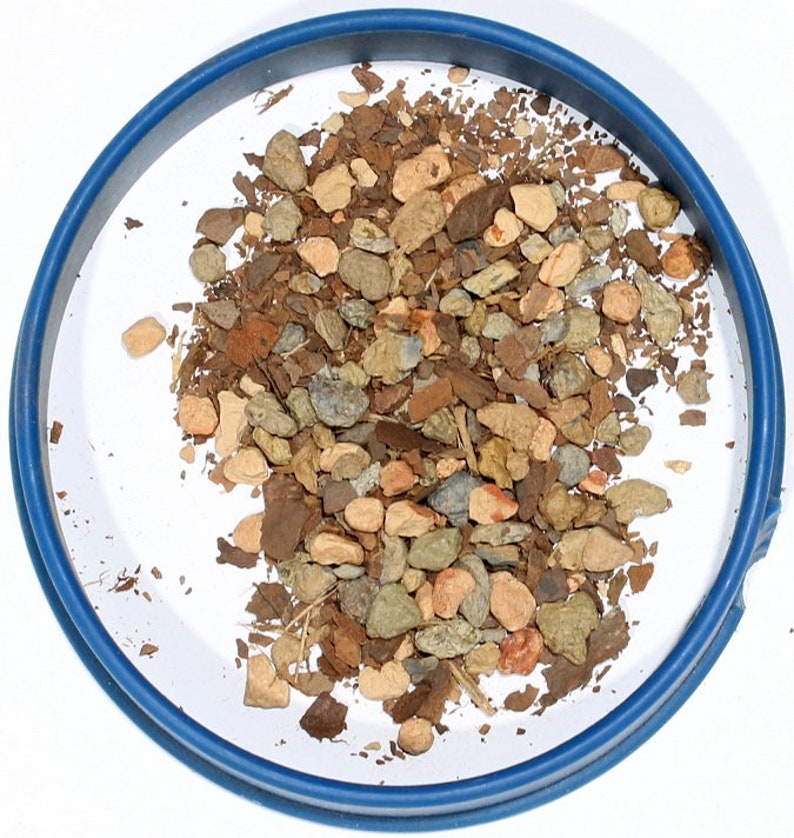
Consider amending your soil with Bonsai Jack’s gritty mix to ensure your succulent soil drains quickly to prevent it from staying moist for too long. Source: Etsy
Temperature Tolerance
Kalanchoe x houghtonii ‘Pink Butterflies’ is quite hardy and can tolerate minimum temperatures down to 30°F (-1°C). However, it’s best to bring the plant indoors or provide some form of protection if frost or freezing temperatures are expected.
USDA Hardiness Zone
This plant is best suited for USDA hardiness zones 9b to 11b. In these zones, it can be grown outdoors year-round. In colder zones, it can be grown in containers and brought indoors during the winter.
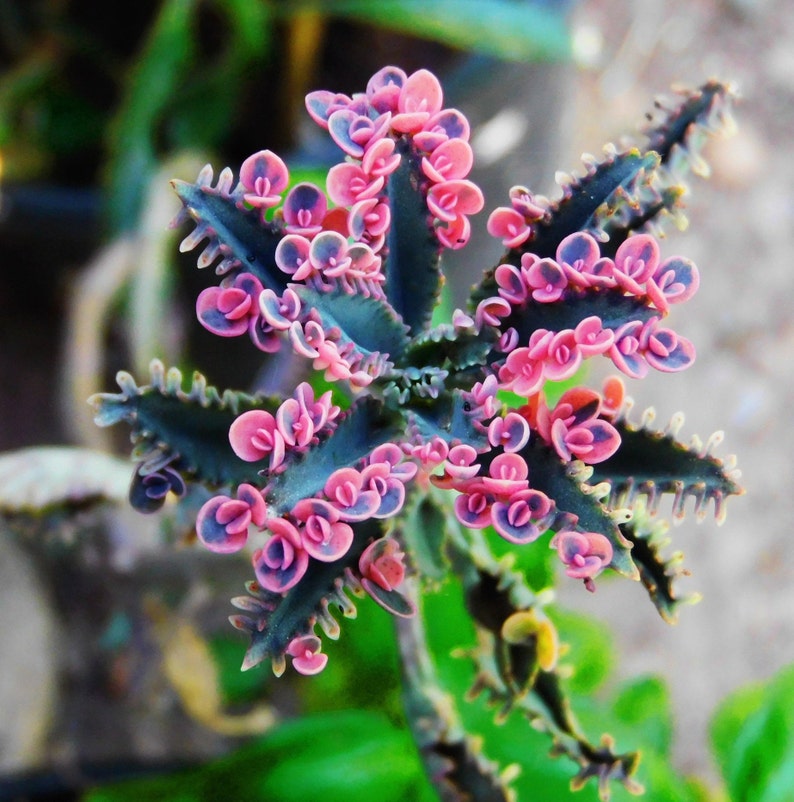
Cross this succulent off your wish list. Buy it on Etsy from the image above.
Fertilizing Needs
Kalanchoe x houghtonii ‘Pink Butterflies’ appreciates a light feeding with a balanced succulent fertilizer during the growing season (spring and summer). Fertilize once a month, and remember to follow the instructions on the fertilizer package to avoid over-feeding.

Succulent fertilizer available to purchase on Etsy.
Propagation Methods
The easiest way to propagate Kalanchoe x houghtonii ‘Pink Butterflies’ is by using the tiny plantlets that form along the leaf margins. Simply remove a few plantlets and place them on top of moist, well-draining soil. They’ll quickly take root and start growing new plants.
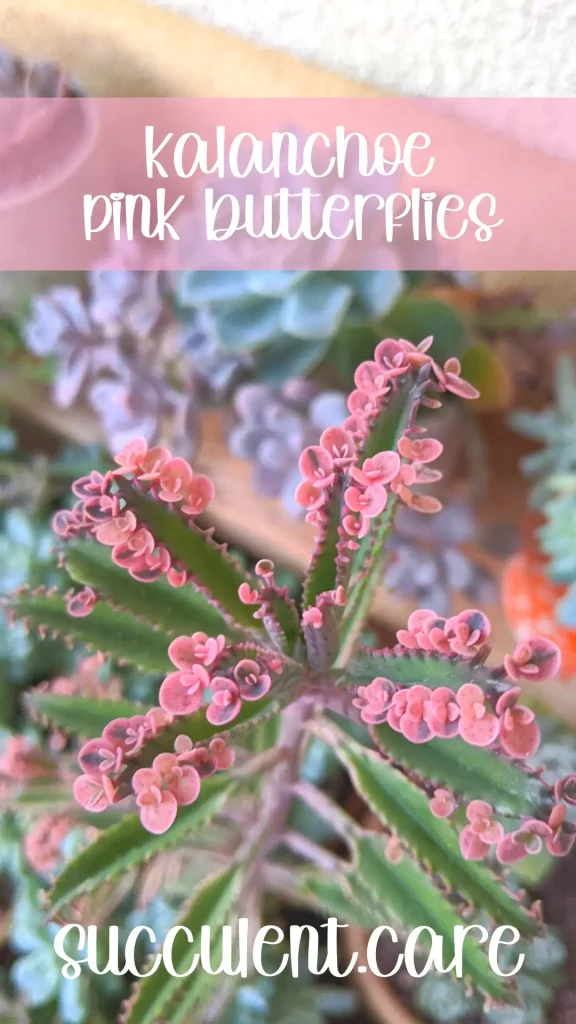
Pest Control
This plant can attract common succulent pests like mealybugs and aphids. If these pests become a problem, you can remove them manually or use a diluted mixture of water and dish soap to spray the plant.
As an Amazon Associate I earn from qualifying purchases at no additional cost to you.
Fix the pest problem on your succulents and cacti with these popular insecticides.
Common Problems and Solutions
Overwatering and insufficient light are common problems when growing Kalanchoe x houghtonii ‘Pink Butterflies’. Symptoms of overwatering include yellowing leaves and root rot. If your plant is showing these signs, reduce watering frequency. If the plant is not receiving enough light, it may begin to stretch or become ‘leggy’. If this happens, increase the amount of light your plant receives.
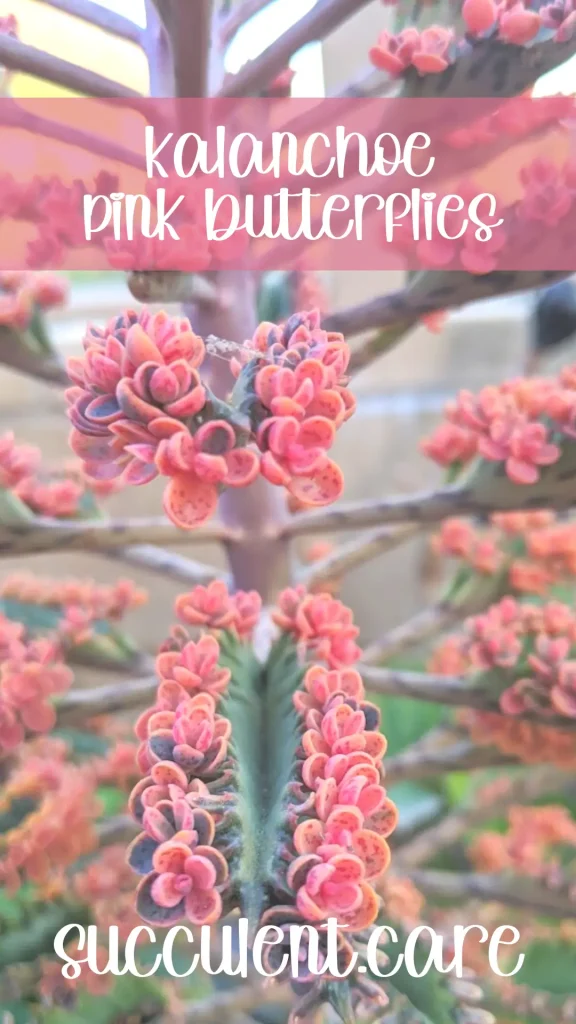
Indoor Growth
To grow this plant indoors, ensure it has access to bright light, ideally near a south-facing window. Use a pot with drainage holes and a well-draining soil mix. Remember to water sparingly – only when the soil is completely dry.
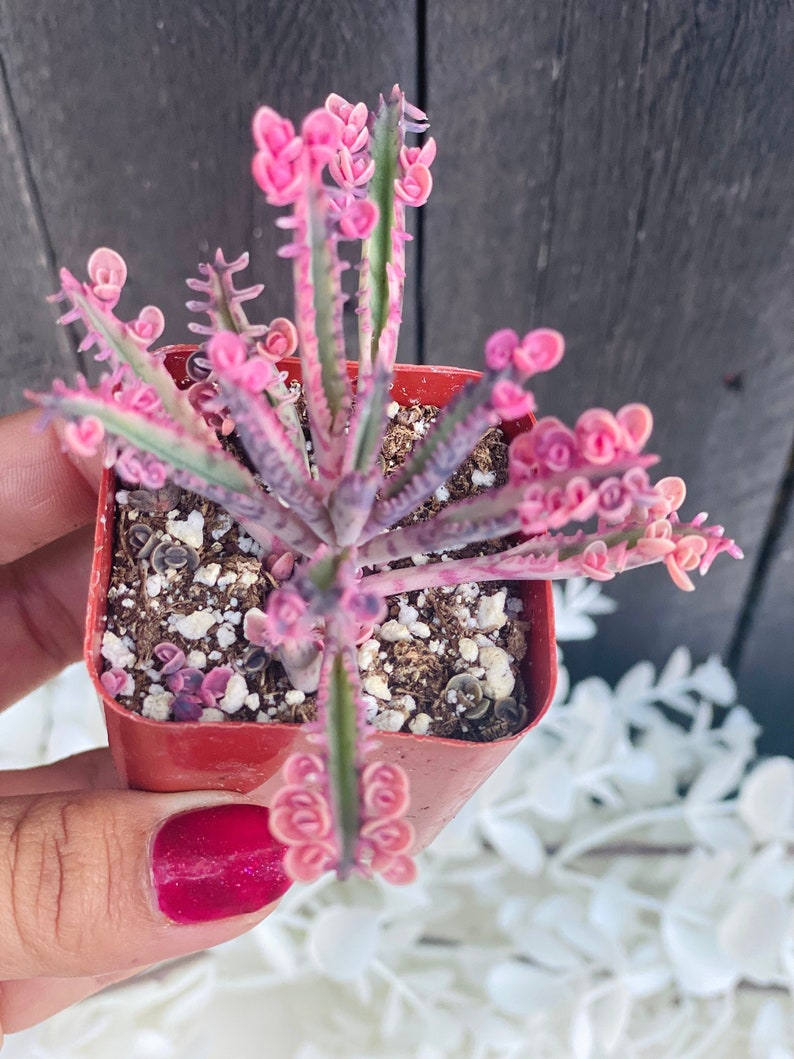
Cross this succulent off your wish list. Buy it on Etsy from the image above.
Toxicity
Kalanchoe x houghtonii ‘Pink Butterflies’ is toxic to cats, dogs, and humans if ingested. Keep the plant out of reach of pets and children.
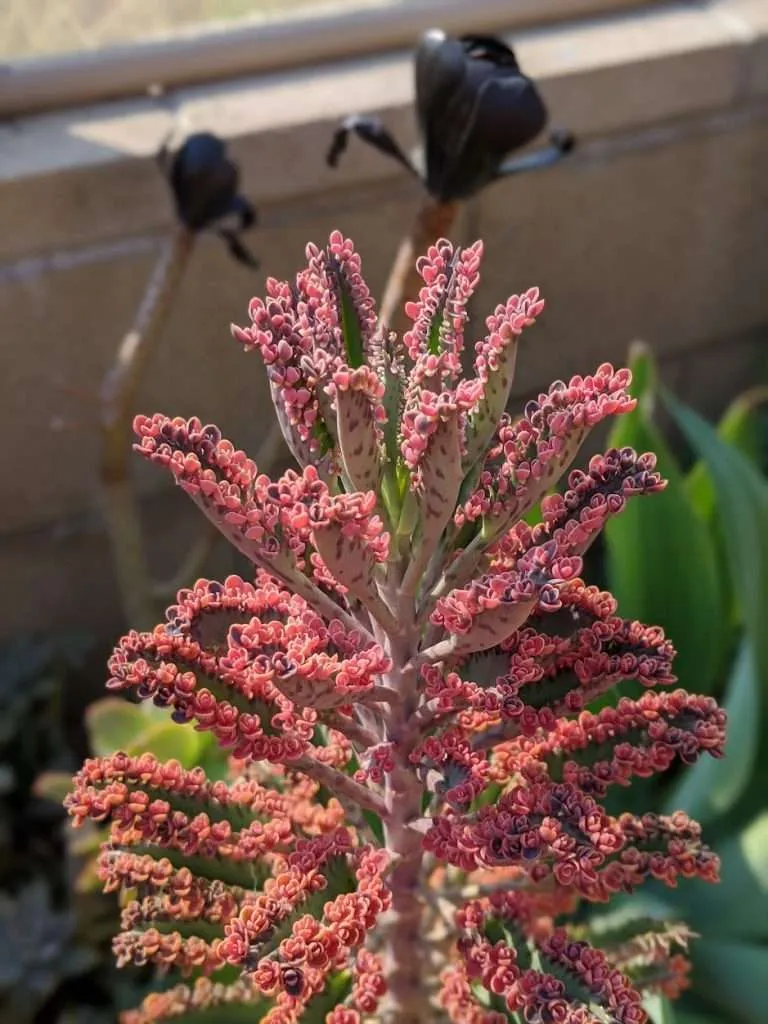
Special Adaptations
One unique adaptation of Kalanchoe x houghtonii ‘Pink Butterflies’ is its prolific reproduction through plantlets. These plantlets, which form along the leaf margins, drop off and quickly take root, allowing the plant to spread rapidly in suitable conditions.
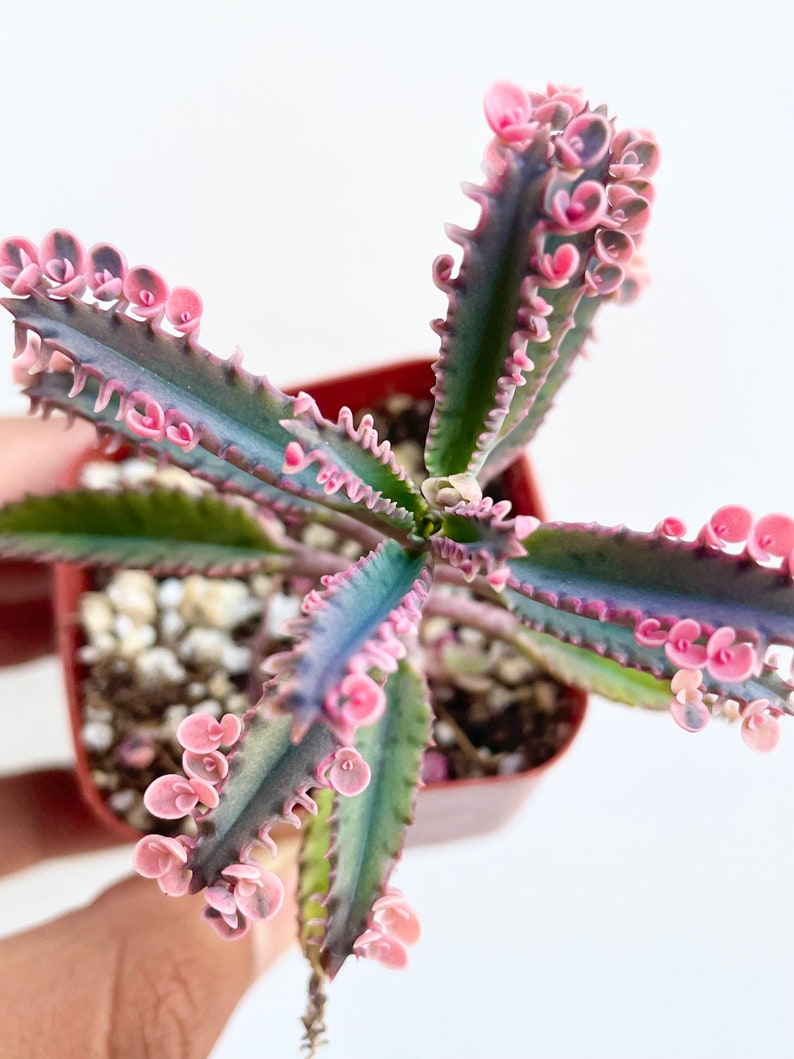
Cross this succulent off your wish list. Buy it on Etsy from the image above.
Repotting Frequency
This plant doesn’t require frequent repotting. Typically, you should repot Kalanchoe x houghtonii ‘Pink Butterflies’ every 2-3 years, or when the plant outgrows its current pot.
Is ‘Pink Butterflies’ Monocarpic?
‘Pink Butterflies’ is a hybrid plant that is created by crossing two species of Kalanchoe: Kalanchoe delagoensis and Kalanchoe daigremontiana. This hybrid plant is also known as Kalanchoe x houghtonii.

Kalanchoe delagoensis, also known as the mother of thousands, is a succulent plant that is not monocarpic. This means that it does not produce seeds and die after flowering, but rather continues to grow and produce flowers over a number of years.

Kalanchoe daigremontiana, also known as the mother of millions or Devil’s Backbone, is a monocarpic succulent plant. This means that it produces seeds and dies after flowering.

It is possible that ‘Pink Butterflies’ may inherit the monocarpic trait from Kalanchoe daigremontiana, but without more information it is difficult to say for certain. You’ll most likely just need to wait and see.

Cross this succulent off your wish list. Buy it on Etsy from the image above.
Pruning Guidelines
Pruning should be done during the growing season (spring or summer). You can trim the plant to maintainits shape and size, or to remove any leggy growth. Use clean, sharp scissors or pruning shears to make clean cuts without damaging the plant. Always remember to handle Kalanchoe x houghtonii ‘Pink Butterflies’ with care, as the tiny plantlets can easily fall off.
Kalanchoe x houghtonii ‘Pink Butterflies’ is a delightful succulent that can add a touch of whimsy and color to any garden or indoor space. With its unique reproductive habits and attractive appearance, it’s a plant that’s sure to catch the eye. By following this comprehensive guide, you’ll be well-equipped to provide the best care possible for your Pink Butterflies succulent.

